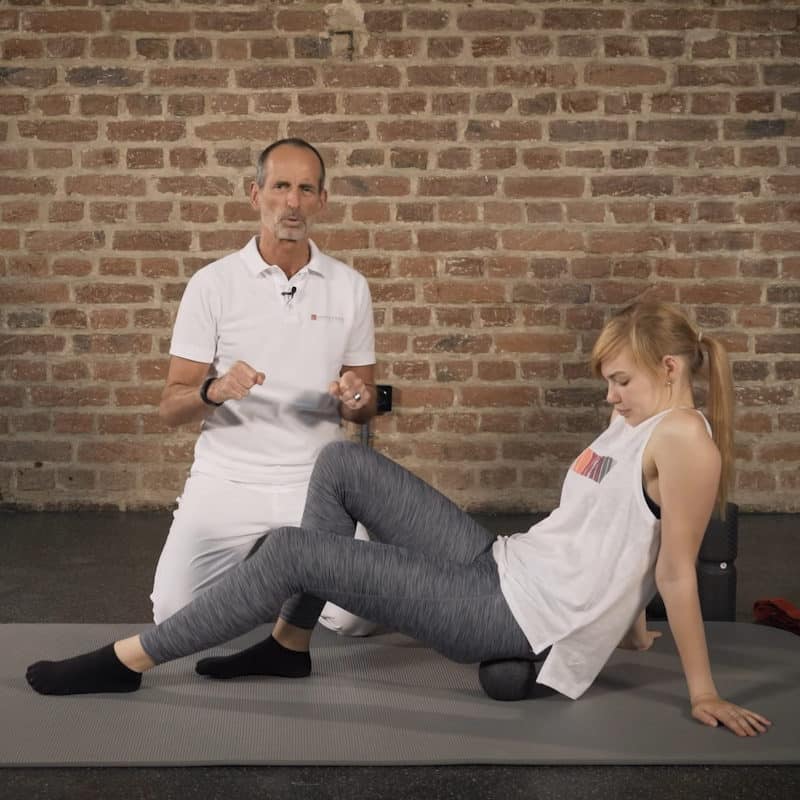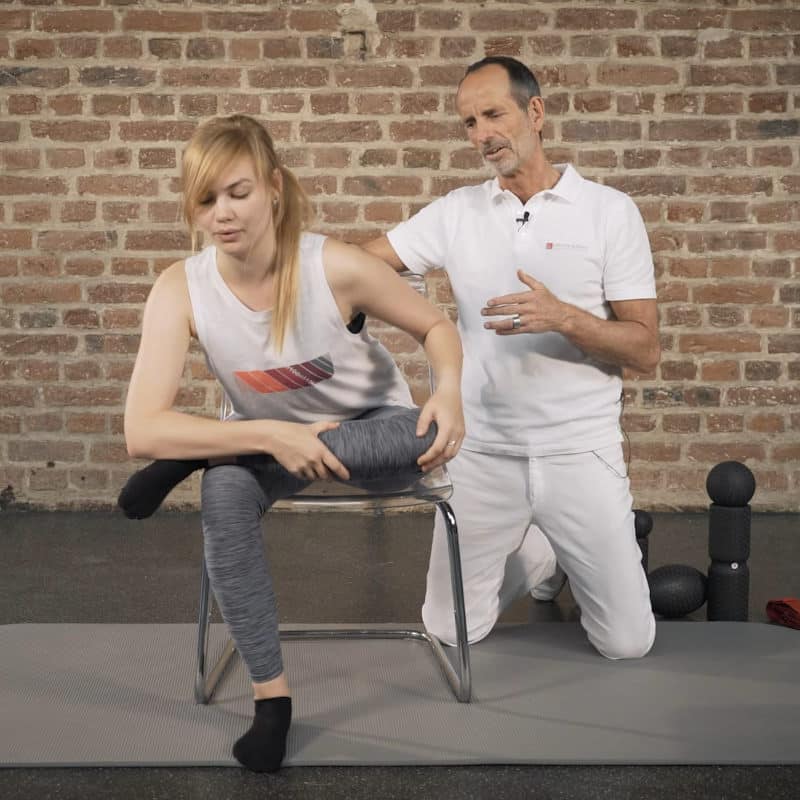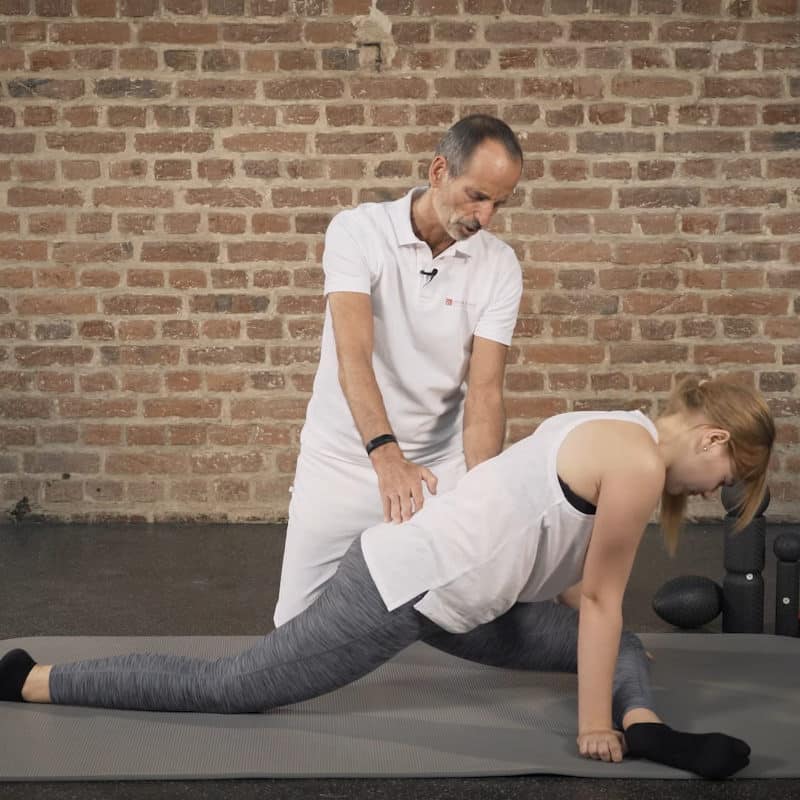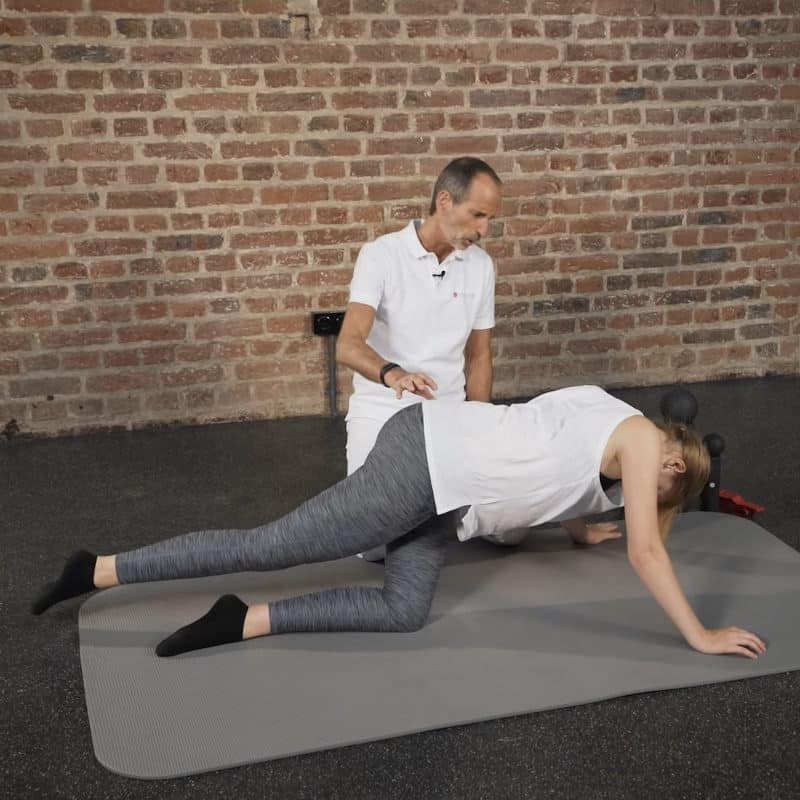Tailbone Pain
Tailbone Pain Exercises
Body Part:
Pelvis, Buttocks
Equipment:
Midi Massage Ball
Level:
Beginner
Tailbone Pain
Body Part:
Pelvis, Buttocks
Equipment:
Midi Massage Ball
Level:
Beginner
As far as bones go, our tailbone is an unsung hero. The bone dutifully does its job of bearing our weight and providing support and stability while we’re sitting. But most of us hardly (if ever) notice or even think about our tailbone — until it hurts. This good little soldier of our skeleton is also known as the coccyx, which is the Greek word for “cuckoo.” The coccyx earned its name because of its shape; the bone looks like a cuckoo bird’s beak. Unfortunately, tailbone discomfort can make you feel like you’re going cuckoo. Fortunately, we’ve developed a routine that can help relieve pain and muscle tension. All you need for our tailbone exercises is our Midi Massage Ball and a chair. If you don’t have our tool, use a ball of a similar size, 115mm (4,5 inches) in diameter. Jump to our routine or keep reading to learn more about your tailbone and the causes and symptoms of coccyx pain.
Medical professionals refer to the tailbone as the coccyx. The coccyx is a small bone shaped like an upside-down triangle at the bottom of the spine under the sacrum. The coccyx is joined to the sacrum by the amphiarthrodial joint.
Depending on how a person’s skeleton develops, the coccyx is made up of between 3 and 5 vertebrae. In some cases, the vertebrae are fused, forming a single bone. In others, the first vertebra is separate from the fused bones.
What exactly does the tailbone do? Some firmly believe that our coccyx is unnecessary. But the coccyx is a point where many muscles, tendons, and ligaments are attached and — together with the two ischial tuberosities bones (also called the sit bones) in your pelvis — it provides weight-bearing support when someone is sitting. 1) The muscles attached to the coccyx (which include several pelvic floor muscles) help with walking, running, leg movement, and bowel movements.
Coccyx pain is also called coccydynia, coccygodynia, and tailbone pain. 2) The discomfort occurs at the base of the spine and can range from a dull ache to sharp pain. The pain may intensify if you’re sitting or standing for long periods or when you stand after sitting. Having sex or paying a visit to the bathroom may cause pain. If you’re female, tailbone pain may intensify menstrual pain.
Common causes of coccyx pain are:
Other causes are:
Body Weight
If you are obese, the additional body weight puts pressure on the coccyx, which can misalign the bone. Being underweight or rapidly losing weight can also cause tailbone pain. If there is not enough fat in your buttocks, the tailbone can rub against the surrounding tissues causing inflammation.
Hemorrhoids
Also known as piles, hemorrhoids are swollen veins in the lower rectum and anus. The inflamed tissue can pull at the muscles attached to the coccyx.
Repetitive Strain Injury
Repetitive strain injury (RSI) is damage done to tissues by repetitive movements or overwork. Sports like rowing or cycling put the muscles, tendons and ligaments attached to the coccyx under constant stress.
Joint Damage
Joints damaged from general wear and tear or repetitive motions can advance tailbone pain.
Vaginal Birth
Giving birth vaginally can stretch and strain the muscles and ligaments surrounding the tailbone.
Visit our online shop to get your Midi Massage Ball and Foam Roller Set. While you’re there, take a look around. We’ve got lots of pain-relieving tools and products waiting to be added to your cart.
Take me to the shop.
You’ll need our Midi Massage Ball for this exercise.

You’ll need a chair for this stretch.

If you find this position too challenging, do not lift your pelvis. Continue stretching on the floor.

Perform our tailbone exercises 6 days a week, leaving 1 day for rest. When you notice the pain around your tailbone has alleviated, you can adjust how often you exercise.
Most of us sit for longer than is good for our bodies. This won’t help your tailbone pain. Take regular breaks and go for walks. When you sit, sit mindfully: keep your back against the back of the chair and make sure both feet are flat on the floor.
Gravity is partly responsible for our poor posture. This 4 minute posture correction exercise shows you how to team up with gravity to develop a healthy habit.
Correct Your Posture NowLeg pain can impact the simplest to the most complex of our movements. This relief routine covers your entire leg, from the tops of your toes to the tips of your hips.
Relieve Your Leg PainDiscover how to rejuvenate your back and hips with our Back Hero. All you have to do is choose the perfect Back Hero stack, lie down, and stretch.
Try Our Back Hero Stretch